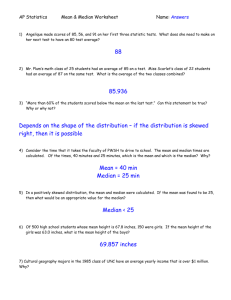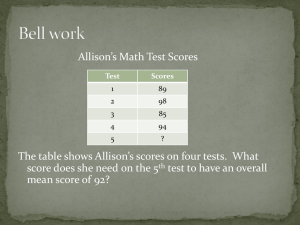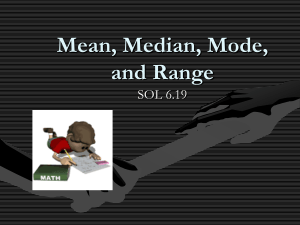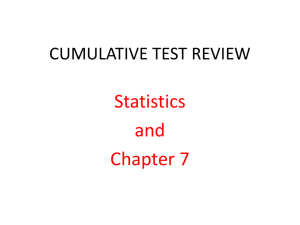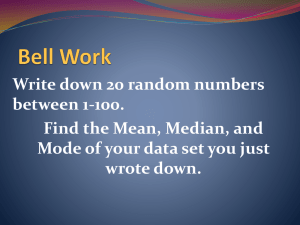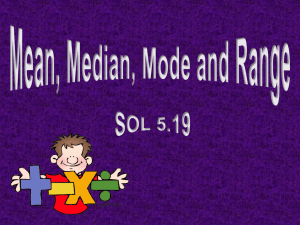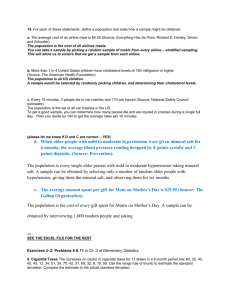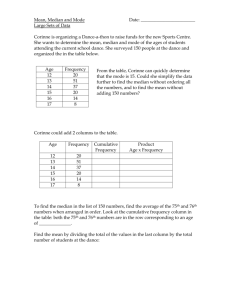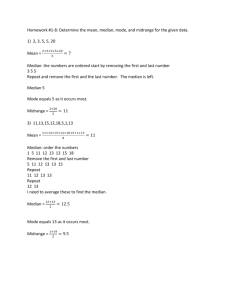Average Height: Math Activity for Middle School
advertisement
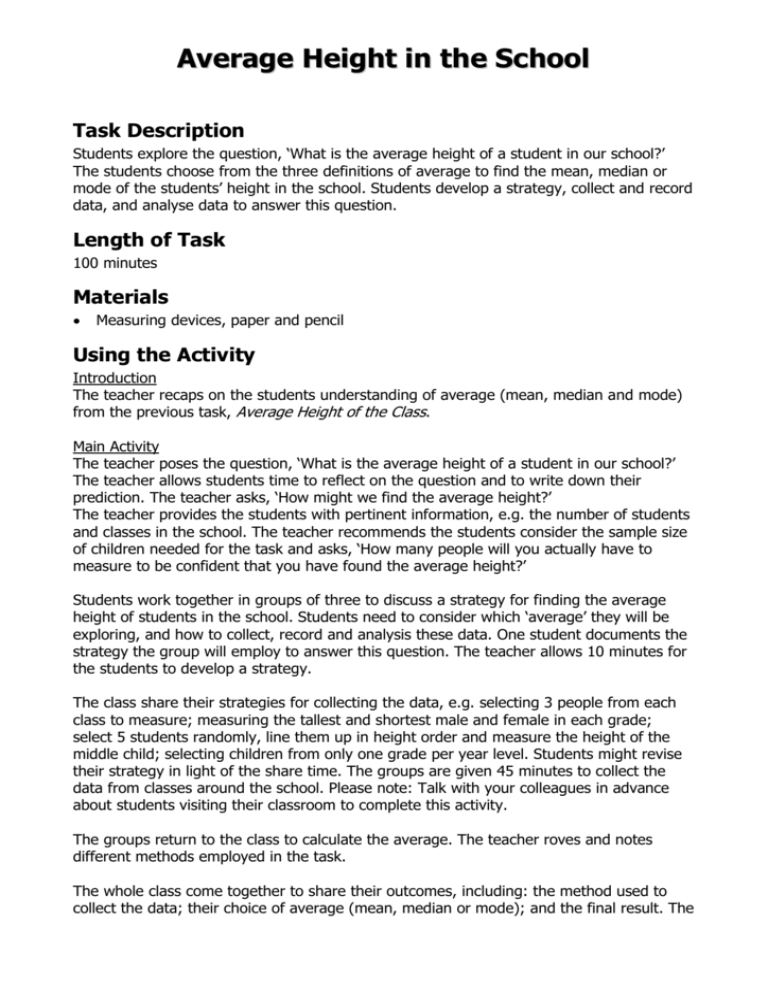
Average Height in the School Task Description Students explore the question, ‘What is the average height of a student in our school?’ The students choose from the three definitions of average to find the mean, median or mode of the students’ height in the school. Students develop a strategy, collect and record data, and analyse data to answer this question. Length of Task 100 minutes Materials Measuring devices, paper and pencil Using the Activity Introduction The teacher recaps on the students understanding of average (mean, median and mode) from the previous task, Average Height of the Class. Main Activity The teacher poses the question, ‘What is the average height of a student in our school?’ The teacher allows students time to reflect on the question and to write down their prediction. The teacher asks, ‘How might we find the average height?’ The teacher provides the students with pertinent information, e.g. the number of students and classes in the school. The teacher recommends the students consider the sample size of children needed for the task and asks, ‘How many people will you actually have to measure to be confident that you have found the average height?’ Students work together in groups of three to discuss a strategy for finding the average height of students in the school. Students need to consider which ‘average’ they will be exploring, and how to collect, record and analysis these data. One student documents the strategy the group will employ to answer this question. The teacher allows 10 minutes for the students to develop a strategy. The class share their strategies for collecting the data, e.g. selecting 3 people from each class to measure; measuring the tallest and shortest male and female in each grade; select 5 students randomly, line them up in height order and measure the height of the middle child; selecting children from only one grade per year level. Students might revise their strategy in light of the share time. The groups are given 45 minutes to collect the data from classes around the school. Please note: Talk with your colleagues in advance about students visiting their classroom to complete this activity. The groups return to the class to calculate the average. The teacher roves and notes different methods employed in the task. The whole class come together to share their outcomes, including: the method used to collect the data; their choice of average (mean, median or mode); and the final result. The Average Height in the School information is recorded on the board. Students are also asked to provide feedback about their strategy's degree of success. Would they adopt a different strategy if they repeated this task? The teacher asks students to consider why there are differences in the results. Which strategy for collecting data would be the most accurate? Why? Do the different definitions of average used affect the results? How do we know which result is correct? Key Mathematical Concepts Consolidating the terms mean, median and mode. Data collection and analysis. Prerequisite Knowledge Understanding the terms mean, median and mode. Links to VELS Dimension Measurement, Chance and Data (Level 4) Measurement, Chance and Data (Level 4) Working mathematically (Level 4) Standard Students calculate and interpret measures of centrality (mean, median, and mode) and data spread (range) for ungrouped data. Students organise and present grouped and ungrouped data using displays such as simple frequency tables. Students develop and test conjectures. Assessment To be working at Level 4, students should be able to: Appropriately calculate the mean, median and mode of a set of data. Develop appropriate strategies for collecting and analysing data. Extension Suggestions For students who would benefit from additional challenges: Pose the question, “The average height of a student is 135cm. Which year level would you visit to find a student of average height? Write down and justify your theory.” Each member of the class finds the average height of their family. Students discuss factors that influence the average, i.e. new-born baby, teenage children, etc. The class calculates the average height of their combined families. Students search the internet to find data about the heights of different nationalities and the influences that impact height. For example, people who live closer to the northern latitudes tend to be taller than those closer to the equator. The Dutch are the tallest nationality on Earth. Average Height in the School Teacher Advice and Feedback Some students’ measuring devices were shorter than the children they measured. Because they guessed the remaining length, their measurements were inaccurate. The teachers were extremely pleased with the way the students thoughtfully considered the task and proposed potentially successful strategies to answer this question. The teachers attributed this to their practice of encouraging students to explore and share different problem-solving strategies. Potential Student Difficulties Students should be reminded to be consistent when collecting the “average” of the students’ height. Some students collected the median on the heights for each classroom then calculated the mean of these results for the final result. For accuracy, the students should find the median of the height for the school if they have collected the median result for each grade. Sources Andrini, B. (2006) Cooperative Learning and Mathematics Heatherton, Victoria: Hawker Brownlow Education. .. Acknowledgements Thank you to the teachers and students from Timbarra Primary School for providing valuable feedback on the use of this activity. Average Height in the School Student Work Sample Working at Level 4 These students have devised a method for collecting and analysing the data. This group has considered gender and grade level as important factors impacting on the height of students.

